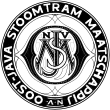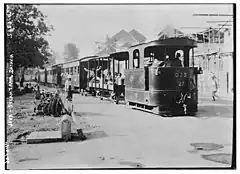| Oost-Java Stoomtram Maatschappij N.V. | ||||||||||||||||||||||||||||||||||||||||||||||||||||||||||||||||||||||||||||||||||||||||||||||||||||||||||||||||||||||||||||||||||||||||||||||||||||||||||||||||||||||||||||||||||||
|---|---|---|---|---|---|---|---|---|---|---|---|---|---|---|---|---|---|---|---|---|---|---|---|---|---|---|---|---|---|---|---|---|---|---|---|---|---|---|---|---|---|---|---|---|---|---|---|---|---|---|---|---|---|---|---|---|---|---|---|---|---|---|---|---|---|---|---|---|---|---|---|---|---|---|---|---|---|---|---|---|---|---|---|---|---|---|---|---|---|---|---|---|---|---|---|---|---|---|---|---|---|---|---|---|---|---|---|---|---|---|---|---|---|---|---|---|---|---|---|---|---|---|---|---|---|---|---|---|---|---|---|---|---|---|---|---|---|---|---|---|---|---|---|---|---|---|---|---|---|---|---|---|---|---|---|---|---|---|---|---|---|---|---|---|---|---|---|---|---|---|---|---|---|---|---|---|---|---|---|---|
 | ||||||||||||||||||||||||||||||||||||||||||||||||||||||||||||||||||||||||||||||||||||||||||||||||||||||||||||||||||||||||||||||||||||||||||||||||||||||||||||||||||||||||||||||||||||
 OJS No. 27 Locomotive in Batavia | ||||||||||||||||||||||||||||||||||||||||||||||||||||||||||||||||||||||||||||||||||||||||||||||||||||||||||||||||||||||||||||||||||||||||||||||||||||||||||||||||||||||||||||||||||||
| Overview | ||||||||||||||||||||||||||||||||||||||||||||||||||||||||||||||||||||||||||||||||||||||||||||||||||||||||||||||||||||||||||||||||||||||||||||||||||||||||||||||||||||||||||||||||||||
| Area served | Surabaya, Sidoarjo, Mojokerto, Jombang | |||||||||||||||||||||||||||||||||||||||||||||||||||||||||||||||||||||||||||||||||||||||||||||||||||||||||||||||||||||||||||||||||||||||||||||||||||||||||||||||||||||||||||||||||||
| Locale | Surabaya | |||||||||||||||||||||||||||||||||||||||||||||||||||||||||||||||||||||||||||||||||||||||||||||||||||||||||||||||||||||||||||||||||||||||||||||||||||||||||||||||||||||||||||||||||||
| Transit type | Tram | |||||||||||||||||||||||||||||||||||||||||||||||||||||||||||||||||||||||||||||||||||||||||||||||||||||||||||||||||||||||||||||||||||||||||||||||||||||||||||||||||||||||||||||||||||
| Number of lines | 2 (1 defunct) | |||||||||||||||||||||||||||||||||||||||||||||||||||||||||||||||||||||||||||||||||||||||||||||||||||||||||||||||||||||||||||||||||||||||||||||||||||||||||||||||||||||||||||||||||||
| Number of stations | 46 | |||||||||||||||||||||||||||||||||||||||||||||||||||||||||||||||||||||||||||||||||||||||||||||||||||||||||||||||||||||||||||||||||||||||||||||||||||||||||||||||||||||||||||||||||||
| Headquarters | Dutch East Indies | |||||||||||||||||||||||||||||||||||||||||||||||||||||||||||||||||||||||||||||||||||||||||||||||||||||||||||||||||||||||||||||||||||||||||||||||||||||||||||||||||||||||||||||||||||
| Operation | ||||||||||||||||||||||||||||||||||||||||||||||||||||||||||||||||||||||||||||||||||||||||||||||||||||||||||||||||||||||||||||||||||||||||||||||||||||||||||||||||||||||||||||||||||||
| Began operation | 1889 | |||||||||||||||||||||||||||||||||||||||||||||||||||||||||||||||||||||||||||||||||||||||||||||||||||||||||||||||||||||||||||||||||||||||||||||||||||||||||||||||||||||||||||||||||||
| Ended operation | 1959 | |||||||||||||||||||||||||||||||||||||||||||||||||||||||||||||||||||||||||||||||||||||||||||||||||||||||||||||||||||||||||||||||||||||||||||||||||||||||||||||||||||||||||||||||||||
| Operator(s) | Kereta Api Indonesia (Successor) | |||||||||||||||||||||||||||||||||||||||||||||||||||||||||||||||||||||||||||||||||||||||||||||||||||||||||||||||||||||||||||||||||||||||||||||||||||||||||||||||||||||||||||||||||||
| Technical | ||||||||||||||||||||||||||||||||||||||||||||||||||||||||||||||||||||||||||||||||||||||||||||||||||||||||||||||||||||||||||||||||||||||||||||||||||||||||||||||||||||||||||||||||||||
| System length | 107 kilometres (66 mi) | |||||||||||||||||||||||||||||||||||||||||||||||||||||||||||||||||||||||||||||||||||||||||||||||||||||||||||||||||||||||||||||||||||||||||||||||||||||||||||||||||||||||||||||||||||
| Track gauge | 1,067 mm (3 ft 6 in) | |||||||||||||||||||||||||||||||||||||||||||||||||||||||||||||||||||||||||||||||||||||||||||||||||||||||||||||||||||||||||||||||||||||||||||||||||||||||||||||||||||||||||||||||||||
| Top speed | 20–40 km/h (12–25 mph) | |||||||||||||||||||||||||||||||||||||||||||||||||||||||||||||||||||||||||||||||||||||||||||||||||||||||||||||||||||||||||||||||||||||||||||||||||||||||||||||||||||||||||||||||||||
| ||||||||||||||||||||||||||||||||||||||||||||||||||||||||||||||||||||||||||||||||||||||||||||||||||||||||||||||||||||||||||||||||||||||||||||||||||||||||||||||||||||||||||||||||||||
Oost-Java Stoomtram Maatschappij (OJS) (English: East Java Steam Tram Company) is the name of a private railway company which once operated in Surabaya, Dutch East Indies. The network had 46 stops with a total of near 66 miles (107 km) track; prior to its demise, it operated between the cities of Surabaya and Sidoarjo, Mojokerto Regency and Jombang Regency, on a mixture of former railway lines and urban on-street running.
Currently all OJS railway lines are assets of Kereta Api Indonesia.
History

The history of the Oost-Java Stoomtram Maatschappij originated in 1886 when the OJS received a concession permit from the Dutch East Indies Colonial Government. OJS then builtsteam locomotive lines around the industrial areas of Surabaya and Sidoarjo. Initially the company had planned out 3 capital sectors, Ujung–Sepanjang–Krian, Mojokerto–Gemekan–Ngoro, and Gemekan–Dinoyo.[1]
On 14 May 1890, OJS opened a new station in Wonokromo, Surabaya, called Wonokromo OJS Station or Wonokromo Kota (not to be confused with Staatsspoorwegen's Wonokromo Station).[2] With intermodal interaction between Staatsspoorwegen and OJS becoming increasingly satisfactory, tram usage in Surabaya increased.
In 1911, OJS expanded its network to cover almost the entire city of Surabaya. OJS then introduced electric powered tram when its track length had just reached 36 km and began operation on 15 May 1923.[3][4] With more and more people using the city's tramline, the main line was getting completely overhauled with route that previously passed along the banks of Mas River finally diverted through the city center, passing Pasar Turi and Sawahan, which follows the main road at the city center, Jalan Pangeran Diponegoro. The old route was removed only as far as Groedo Station.
To support operations , a tram depot and electric power station were built in Sawahan.[5] The power station was used to provide currents to electric trams around Surabaya and was built in 1925 with 2 Siemens Suckert & Walschke motor generators, each of which had a power of 500 KW - 600 volts DC. This 600 volt DC overhead power network covered the Tanjung Perak–Jembatan Merah–Genteng Besar–Sawahan–Gubeng–Wonokromo Kota route.[6]
As of 1927, it was recorded that 11.4 million passengers were transported by electric tram and 5.2 million people were transported by the OJS steam tram.[1]
Construction History
In its history, OJS has been recorded to have operated its trams in Mojokerto and Surabaya.
Lines in Surabaya
First Period (Steam locomotive)[7]
| Lines | Segments | Legality | Inaugurated | Keterangan |
|---|---|---|---|---|
| Ujung-Krian | Ujung–Fort Prins Hendrik | Gouvernments Besluit van 24 October 1886 No. 2/c | 10 December 1889 |
In the 1905 map, this route passes along the banks of Mas River at Surabaya. Parts of the track was dismantled simultaneously with the relocation of the track from the edge of Mas to the centre of the city and the inauguration of the electric tram, except in the direction of Groedo, survived until the Japanese occupation of the Dutch East Indies. |
| Fort Prins Hendrik–Staatsspoorweg Station | 17 December 1890 | |||
| Stadtstuin–Willemplein–Kalimas | 1 Juni 1897 | |||
| Staatsspoorweg Station–Telefoonkantoor (with branches to Simpang) | 15 April 1890 | |||
| Telefoonkantoor–Groedo Station | ||||
| Groedo Station–Wonokromo Kota | 14 Mei 1890 | |||
| Wonokromo Kota–Sepanjang OJS | 27 September 1890 | |||
| Sepanjang OJS–Krian | Gouvernments Besluit 19 October 1895 No. 6 | 14 Februari 1898 | ||
| Regentstraat–Pasarturi–Wonokromo | Art. 2 Gouvernments Besluit 6 Januari 1913 No. 33 | 2 Maret 1916 | This route was a relocation of the route which was originally located on the banks of Mas River |
Second Period (Electric powered tram)[8]
| Segments | Legality | Inauguration | Length (km) | Annotation |
|---|---|---|---|---|
| Regentstraat–Tandjoeng Perak | Gouvernments Besluit 25 November 1915 No. 56 | 1 Agustus 1920 | 16 | A number of tram lines were double track |
| Wonokromo–Willemsplein | 15 Mei 1923 | 8,4 | ||
| Kayoon–Hoek Palmenlaan | 16 Mei 1923 | 1 | ||
| Sawahan (tram depot)–Toenjoengan | 16 Mei 1923 | 3 | ||
| Willemsplein–Tandjoeng Perak | 12 Juli 1923 | 5 | ||
| Kayoon–Surabaya Goebeng–Kampung Goebeng | 11 Februari 1924 | 2 | ||
Lines in Mojokerto[7]
| Lines | Segments | Legality | Inauguration | Length (km) | Annotation |
|---|---|---|---|---|---|
| Pabrik Spiritus Wates–Mojokerto Kota–Gemekan | SF Kapettengan (SF Sentanen Lor)/Mojokerto Kali–Mojoagung | Gouvernments Besluit 11 Mei 1887 No. 8/c | 1 Oktober 1889 | 17 | |
| Mojokerto Kali-Wates | Gouvernments Besluit 25 Mei 1909 No. 37 | 1 April 1909 | 3 | ||
| Gemekan-Ngoro | Mojoagung–Ngoro | Gouvernments Besluit 11 Mei 1887 No. 8/c | 1 Januari 1890 | 17 | |
| Gemekan-Dinoyo | Gemekan-Dinoyo | Gouvernments Besluit 31 Mei 1890 No. 7 | 5 Maret 1892 | 8 | |
Post-Independence

In 1959, President Sukarno issued a Government Regulation No. 40 of 1959, which included, the nationalisation of all railway lines and steam locomotives which were previously operated by Dutch-owned companies, whose operations were handed over to the Djawatan Kereta Api Republik Indonesia (DKA), which included the ex-OJS route.
In 1968–1969, electric trams were discontinued and overhead power cable covering the tram line were removed with some of its branch lines also ceasing to operate.
Ella Ubaidi, EVP of PT KAI's Center for Architectural Conservation and Design Unit, said that with a fare of 15 cents for class I and 10 cents for class II, it would not be viable to save Surabaya's trams from extinction. Since the 1970s, Surabaya's trams were declared non-operating because they were unable to compete with private cars and public transportation as well as the large number of illegal passengers which caused PJKA revenue to plunge. With the closure of the Surabaya steam tram in 1978, the history of the Surabaya tram ended.[9][10][11]
The reactivation of the Surabaya Tram is included in the priority list carried out by the Ministry of Transportation in collaboration with PT KAI and the Surabaya City Government. However, there are no signs that this route will be implemented soon.[12]
References
- 1 2 "A historical piece of the history of tram in Surabaya". Historia (in Indonesian). 5 May 2015. Retrieved 8 September 2023.
- ↑ Widodo, Dukut Imam (2002). Soerabaia tempo doeloe. Surabaya: Dinas Pariwisata, Kota Surabaya. p. 419.
- ↑ Colombijn, Freek; Coté, Joost (2014). Cars, conduits, and kampongs the modernization of the Indonesian city, 1920-1960. Leiden: Brill. ISBN 9004280723. OCLC 894170623.
- ↑ "Oost-Java Stoomtram Maatschappij".
- ↑ "A historical piece of the history of tram in Surabaya". Ayo Rek (in Indonesian). 8 July 2013.
- ↑ Nusantara, Tim Telaga Bakti; Perkeretaapian, Asosiasi Pakar (1997). Sejarah Perkeretaapian Indonesia Jilid 2 (Cet.1 ed.). Bandung: CV. Angkasa. p. 186.
- 1 2 Oost-Java Stoomtram Maatschappij (1902). Verslag der Oost-Java Stoomtram Maatschappij. Den Haag: OJS.
- ↑ Burgerlijke Openbare Werken (1916). Verslag betreffende het spoor- en tramwegwezen in Nederlandsch-Indië. Batavia: Burgerlijke Openbare Werken.
- ↑ okler.net. "Heritage - Kereta Api Indonesia". heritage.kai.id. Retrieved 20 July 2018.
- ↑ "Java's Steam Tram Locomotives in the 1970s". www.internationalsteam.co.uk. Retrieved 20 July 2018.
- ↑ Raap, Olivier Johannes (2017). Kota di Djawa Tempo Doeloe. Jakarta: Gramedia Pustaka Utama. p. 184.
- ↑ Idris, Muhammad. "Selain Rel Kereta, Kemenhub Juga Aktifkan Jalur Trem di Surabaya". detikfinance. Retrieved 23 February 2018.